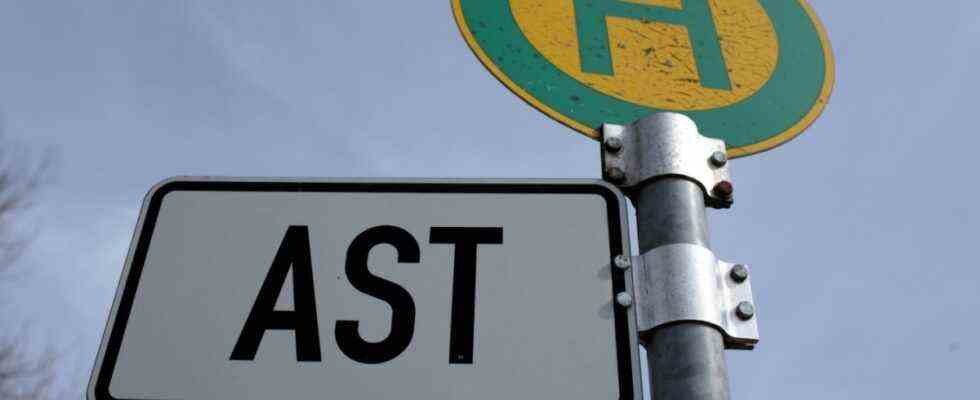The S-Bahn is late and the bus is gone. It was the last one that evening. Anyone who knows something like this only too well can hope for a new pilot project. The district of Munich wants to test so-called on-demand buses from October 2022 to December 2024, in many places also called on-demand buses or call-collecting taxis. These buses or large-capacity vehicles come to order, but must be called in advance online, via app or telephone. Long-term bookings and advance bookings are also possible. A ticket from the Munich Transport Association (MVV) is required for the journey, unless the route is included in the season ticket tariff.
The offer, which is now called “MVV-Ruftaxi”, has been available in the Fürstenfeldbruck district since 1998 and is constantly being expanded. You can hardly get a seat between 10 p.m. and midnight, the local district office proudly announces. Now the district of Munich, in cooperation with the MVV, wants to better serve poorly offered places with on-demand buses, especially at off-peak times. The on-call buses come to order and bring passengers to and from S-Bahn and U-Bahn stations.
For the trial operation, a connection from 10 p.m. to 6 a.m. for passengers from Unterhaching, Taufkirchen and Oberhaching to the Ostbahnhof or Neuperlach Süd is initially planned for the night traffic of the city of Munich. During the day, from 5 a.m. to 10 p.m., passengers are driven from Aying, Sauerlach and parts of the municipality of Brunnthal to the S-Bahn to Aying and Sauerlach and back on request. The municipality of Straßlach-Dingharting should also be involved as soon as possible, at least for school transport.
Around the lines there was “a smack and stabbing” between the local politicians
“There was a banging and stabbing in the district council because more than the planned communities wanted to take part in the pilot project,” Brunnthal Mayor Stefan Kern (CSU) remembers the October meeting of the mobility committee. Kern is happy that his community is there, albeit without the sub-areas of Brunnthal-Nord, Gudrunsiedlung and Kirchstockach. They were too far away from Sauerlach and Aying, was the reasoning, which was criticized by the Brunnthal municipal council. But Kern is already thinking ahead: “With the connection to Sauerlach, you have to think about the accessibility of the future high school there in the background.” The Realschule Oberhaching also generates demand when it goes into the previous school year. So that schoolchildren from the large municipality of Straßlach-Dingharting can get to class on time, an “expansion of the reinforced trips” on line 222V to Oberhaching is currently being examined, the district office announced.
A total of seven large passenger cars, each with eight seats, are to be used in the pilot area. According to the MVV, two of them will be handicapped accessible. The vehicles move freely in the respective areas. They do not take passengers to their front door, but to existing bus stops and 115 additional virtual stops that have been located and coordinated for day and night operations. The district office promises that in all participating districts with more than 200 inhabitants the next stop can be reached within 200 meters. For example, there will be five stops in Brunnthal, two each in Brunnthal-Ort and Hofolding and one in Faistenhaar.
The Geldhauser company from Hofolding operates a number of call taxi lines in the Fürstenfeldbruck district with minibuses.
(Photo: Carmen Voxbrunner)
So if you want to get from Otterloh to the city center early in the morning or go home from there at night, it is best to enter the connection and desired departure or arrival time in the MVV app, on the MVV website or by telephone. A computer system checks which connection is suitable and takes the on-demand offer into account if there is no regular connection. If you opt for an on-demand service, the system uses the requests to calculate the optimal route, which the bus driver sees on his display. He knows how many people he has to take with him from where to where.
According to the district office, the estimated costs are between 1.4 and 1.75 million euros per year. The project is still quite expensive because the switchboard will be set up separately and will be staffed around the clock. With the pilot project, the district wants to check how great the demand, the organizational and operational effort and the costs actually are. It can be extended to 2026 for further clarification. For Hans Sienerth, the non-party mayor of Straßlach-Dingharting, this is no longer a question: “We can get more people out of the car and onto public transport if we take them to Oberhaching or the Deisenhofen S-Bahn station without having to wait long and change trains,” he says. For example, with a tangential line to Oberhaching, which he has been asking for for a long time. “We can also use an on-demand service to open up at least nine of the remote neighborhoods in our ten districts, of which, by the way, only six are on a bus route.”

